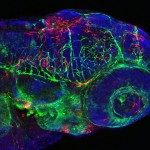Lien vers Pubmed [PMID] – 29178520
Eur. J. Immunol. 2018 01;48(1):15-31
Barrier surfaces of multicellular organisms are in constant contact with the environment and infractions to the integrity of epithelial surfaces is likely a frequent event. Interestingly, components of the immune system, that can be activated by environmental compounds such as the microbiota or nutrients, are interspersed among epithelial cells or directly underlie the epithelium. It is now appreciated that immune cells continuously receive and integrate signals from the environment. Curiously, such continuous reception of stimulation does not normally trigger an inflammatory response but mediators produced by immune cells in response to such signals seem to rather promote barrier integrity and repair. The molecular mediators involved in this process are poorly understood. In recent years, the cytokine interleukin-22, produced mainly by group 3 innate lymphoid cells (ILCs), has been studied as a paradigm for how immune cells can control various aspects of epithelial cell function because expression of its receptor is restricted to non-hematopoietic cells. We will summarize here the diverse roles of IL-22 for the malignant transformation of epithelial cells, for tumor growth, wound healing and tissue repair. Furthermore, we will discuss IL-22 as a potential therapeutic target.

